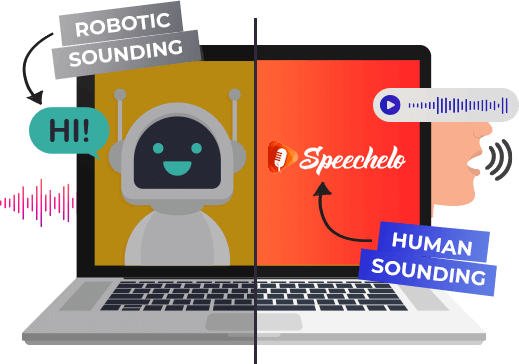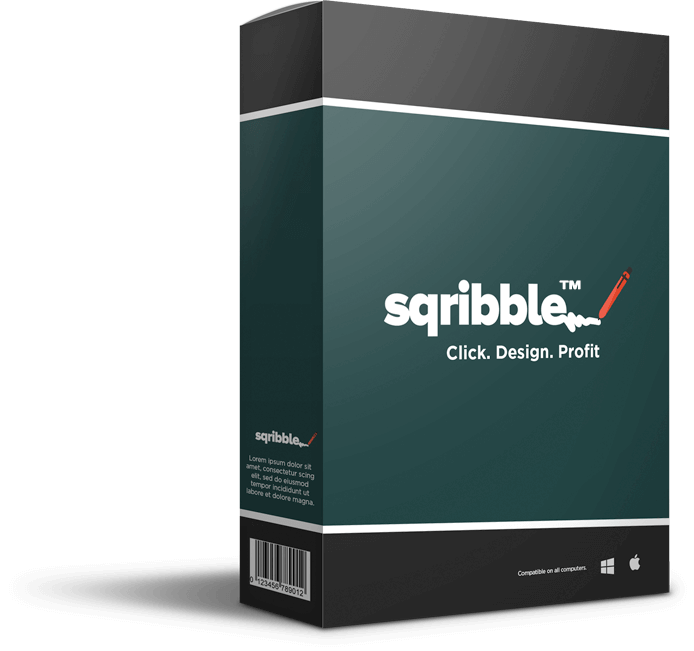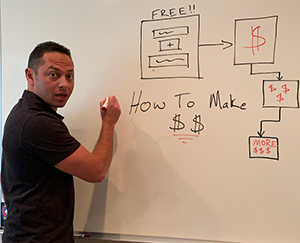Your basket is currently empty!
7 Steps to a Complete Visibility Audit

7 Steps to a Complete Visibility Audit written by John Jantsch read more at Duct Tape Marketing
Listen to the full episode: Overview On this solo episode of the Duct Tape Marketing Podcast, John Jantsch tackles the evolving world of SEO—and why it’s time to focus less on “rankings” and more on holistic digital visibility. John walks through a practical step-by-step visibility audit, highlighting the key areas every business must review: from […]
7 Steps to a Complete Visibility Audit written by John Jantsch read more at Duct Tape Marketing
Listen to the full episode:
![john jantsch]() Overview
Overview
On this solo episode of the Duct Tape Marketing Podcast, John Jantsch tackles the evolving world of SEO—and why it’s time to focus less on “rankings” and more on holistic digital visibility. John walks through a practical step-by-step visibility audit, highlighting the key areas every business must review: from AI overviews and Google Maps to reviews, media mentions, E-E-A-T, and content structured for modern search and answer engines. Whether you’re a local business or a national brand, this episode will help you see where you really stand (and what to fix first).
About the Host
John Jantsch is a marketing consultant, speaker, and author of several best-selling books including Duct Tape Marketing and The Ultimate Marketing Engine. He’s the founder of Duct Tape Marketing, a trusted resource for small business owners and marketers looking to simplify and succeed with their marketing.
- Website: ducttapemarketing.com
- Podcast Archive: Duct Tape Marketing Podcast
Actionable Insights
- SEO isn’t dead, but it’s now about visibility—not just rankings. Think: where are you seen when customers are searching, asking, or being referred?
- Audit your presence in Google’s AI overviews: Search your top products, services, and brand questions in Google and see if your business is cited.
- Check your local pack presence: Are you appearing in Google Maps results for relevant local searches?
- Review volume, freshness, and sentiment matter: Google (and prospects) look for current, consistent, positive reviews—especially on Google Business Profile, Yelp, and industry sites.
- Media mentions and authority: Are you being cited by credible sources, industry publications, or local media? These drive authority with both search engines and AI models.
- E-E-A-T (Experience, Expertise, Authority, Trust): Are you demonstrating real proof on your website (bios, testimonials, transparent pricing, case studies, original research, schema markup)?
- Structure content for AI: Step-by-step guides, FAQs, tables of contents, short answers, and conversational Q&A boost your chances of being surfaced in AI and answer engines.
- Add CTAs everywhere: Make sure every key page and content section has clear calls to action—don’t make people hunt for how to contact, call, or buy.
- Use tools and checklists: Tools like Gumshoe.ai and a structured audit checklist will help you track and improve your visibility across all touchpoints.
Great Moments (with Timestamps)
- 00:01 – Why SEO Isn’t Dead—But Visibility Is What Matters
John reframes the conversation from rankings to real-world visibility. - 01:35 – Elements of a Visibility Audit
The step-by-step checklist: AI overviews, local pack, reviews, media mentions, E-E-A-T, content fit, and CTAs. - 02:25 – Using Tools Like Gumshoe.ai for AI Visibility
How to check your brand’s presence in AI answers. - 03:34 – The Power of Local Pack and Reviews
Why freshness, volume, and sentiment of reviews matter for both trust and search. - 04:44 – Authority & Media Mentions
How being cited by credible sources impacts your search and AI ranking. - 05:45 – E-E-A-T in Action
Demonstrating expertise and trust on your website for both search engines and humans. - 07:09 – Structuring Content for AI and Modern Search
Why FAQs, step-by-step guides, and clear answers are the new keyword strategy. - 08:29 – CTAs: The Final Visibility Step
Make it clear and easy for visitors to take the next step.
Insights
“Visibility is the new SEO—showing up in AI, maps, reviews, and media is what really matters now.”
“A single, strong review in the last month is worth more than a hundred from three years ago.”
“AI and answer engines reward structured content—step-by-step guides, FAQs, and short, clear answers.”
“Don’t just rank—be seen, be trusted, and make it easy for people to take action.”
John Jantsch (00:01.154)
Hello and welcome to another episode of the duct tape marketing podcast. This is John Jantsch and no guest today. I’m going to do a solo show. I’m to do, in fact, a couple of shows on the whole broad topic of SEO, which depending upon who you talk to today is either dead or has at least a new name. And so I’m going to add to that conversation. SEO is definitely not dead. However, I’m going to add to that conversation that I think we need to think about it differently. It is more about
visibility. That’s what we’re really trying to get our clients not so much rankings. It’s visibility in a lot of the different ways that people are choosing to find their answers. Obviously people are going to AI tools, Google and other search engines are showing them AI answers. So there’s no question that that is become a part of the game that we have to pay attention to, but not at the absence of many of the other things. I mean, people still make recommendations. make her
referrals for a lot of businesses. They are definitely going to Google, looking in that map pack and they’re looking at your reviews. So there’s many things that lead to whether or not somebody’s going to go on that journey with you or not. Obviously, one of the steps is about being seen and found, but it’s a lot more, it goes a lot deeper than just that element. So what I want to talk about today is actually doing a visibility audit. I’m going to give you the elements that I think are important and talk a little bit about.
how you might think about them and how you might do them as well. And then we’ll have a checklist in the show notes for this. So if you want to head on over to Duct Tape Marketing, the podcast and find the show, the visibility audit, you will be able to acquire that checklist as well. So let’s get into the steps in there. So the first one is, your brand showing up?
in Google’s AI overview. So pretty simple. Go to Google and search the top service products, questions in Google that are related to your company, your industry, your brand, and see if you get cited in any of those. Now, as we go through these, if you and you do have the checklist, you can assign a score to that. Do a dozen or so searches and one to five. How’d you do?
John Jantsch (02:25.902)
There’s a tool out there that I’ve been playing around with that I’ll tell you about. called Gumshoe.ai. And it will really give you, I think, some, you can run a report and get the very detailed information about where you show up in AI. All right, the next one, and this is of course, hyper, hyper important for local businesses, and that is your local pack presence. So on the maps, when somebody searches and it’s clearly a…
a location based type of search. mean, sometimes people actually put a town in there, but even if they don’t, if they’re looking for something in a town, you Google knows where they are. So do searches around your same thing, your business, your industry, your products and services, your brand. And do you appear in the Google map pack? So, you know, do if you’re happened to be in that town, you can do your service near you. Checklisting star reviews.
you know, optimization, not just of your own, but look at your competitors. What are they doing? All right. Speaking of reviews, volume, freshness, sentiment, all really count. Google doesn’t want to see that you’ve got a hundred reviews one day and then haven’t gotten any for three years. So are your reviews strong and recent enough to inspire trust? Because it’s not just Google. It’s the, know, if you go somewhere and nobody’s reviewed a business for four years, doesn’t that make you a little…
suspicious, right? So go to Google business profile, of course, but also today, you know, I used to kind of be negative on Yelp and I’m still not a huge fan of Yelp. But increasingly, those reviews are being drawn in by AI. So we need to look at all the industry review sites, look at the count rating recency responses. Again, this can apply for your competitors as well.
Media mentions and authority, a big, big part of the game and showing up today is really about authority and most media sites, like it or not, are seen as authority. So if you get quoted in the local paper, if you get quoted in the Wall Street Journal, and they link back to your website, even if they don’t link back to your website, but they mention your business.
John Jantsch (04:44.686)
All the crawlers are now picking that kind of information up and really assigning a lot of authority if the Wall Street Journal talked about you you must know something so Is your business being cited in any credible resources or sources? I should say beyond your own website You can look in Google News You can do podcast searches you can use tools like refs or SM some rush
You know, tools like that to find citations, backlinks, mentions of your brand. And again, right now all we’re doing is auditing. These are the key components. Once you have a sense of, or a sense of dread, or a sense of where you stand, these, then we can start talking about how to fix them. All right. You’ve probably heard people talk about this acronym EAT, E-E-A-T. So it stands for experience.
expertise, authority, and trust. It’s basically proof points, especially on your website. So are you adding experience, expertise, authority, and trust in any of your webpages, any of your blog posts? So do you have author bios? Do we have testimonials? Do we have pricing this transparent? Are there case studies? Is there original research? Schema markup also helps identify what those various elements are.
You know, even if you’ve written content three, four years ago, going back and thinking about, you know, how could we add a case study, an actual example of somebody getting a result that we’re talking about here? How can we get quotes from other from clients or how can we get quotes from other experts that would really validate what it is that we’re talking about? All right. Content fit for AI. So is your content structured for AI?
There is now a somewhat formulaic way to make your content more structured for AI. So things like lists, step-by-step how-tos, answers. You’ve probably heard people talk about answer engine optimization. And a lot of times people are going to AI tools and asking very long detailed filtered questions. So the more you can provide these short structured answers to the types of questions that people are asking in conversation,
John Jantsch (07:09.974)
it’s totally different than ranking for some keyword term. You might show up for a percentage of searches on a very specific term because you’ve answered a very specific answer. So FAQs fit right into that as well. So you can again, go back to your content if you’ve written it before and add a step-by-step how-to, add an overview of what the content is, add a table of contents to the…
Add some questions, even have some of your headlines be questions and then answer the question in there. And then one simple way, let’s say you’re a modeling contractor and you do kitchens, baths and additions. Well, you hopefully have service pages for all three of those elements that demonstrate you do lots of great work in those categories. But why not have FAQs on every single one of those pages? People have questions.
And so it’s very useful content to be answering the specific questions that people have, but it’s also amazing search content. It’s amazing AI content. So make sure you’re doing it. And lastly, what are your calls to action? mean, is it, once somebody finds you, it clear what they should do next? So look at all of your top pages. Are there CTAs to call or to book or to actually buy or to contact you?
give people multiple options to just click on, know, have that phone number up at the very top or have that email or have that evaluation form right there on the above the fold on the homepage so that they don’t have to go looking for it, but also in context of when they’re actually looking at a service, maybe they’re actually down to the part where they’re reading the FAQs, make sure you have CTAs there as well. So.
Those are some things that you might want to audit as a visibility type of approach. Like I said, we’ll have the show in the show notes. We’ll actually have a checklist for this tool as well. So that’s it for today. I’m going to do another show pretty soon. Also on the topics around visibility, the topics around how to create content that that will rank for both the search engines. Again, we’ve got to rank for
John Jantsch (09:28.502)
for algorithms, for search engines, for AI bots, and let’s not forget, for people. So thanks for tuning in today. Hopefully we’ll run into you one of these days out there on the road.
Sign up to receive email updates
Enter your name and email address below and I’ll send you periodic updates about the podcast.
Recommended Story For You :


Successful dropshippers have reliable suppliers.

People Think I Use A Professional Voiceover Artist. NO! I Just Use Speechelo!

Make Money Testing Apps On Your Phone Or Tablet

Make More Money or Lose Everything

Sqribble Is The ONLY eBook Creator You’ll Ever Need.

Work & Earn as an Online Assistant

Create Ongoing Income Streams Of $500 To $1000 Or More Per Day

It's The Internet's Easiest Side Business.

without the right system making money on the web is almost impossible.
Related Posts

Technical Analysis: 4 Stocks with signs of death crossovers to keep an eye on

HDFC Bank & 3 other fundamentally strong stocks trading above 200 DMA to keep an eye on

Falling Channel Breakout: Multibagger NBFC Stock Shows Bullish Momentum on Daily Chart

4 Fundamentally strong stocks to buy for an upside potential of up to 36%; Do you hold any?

Leave a Reply